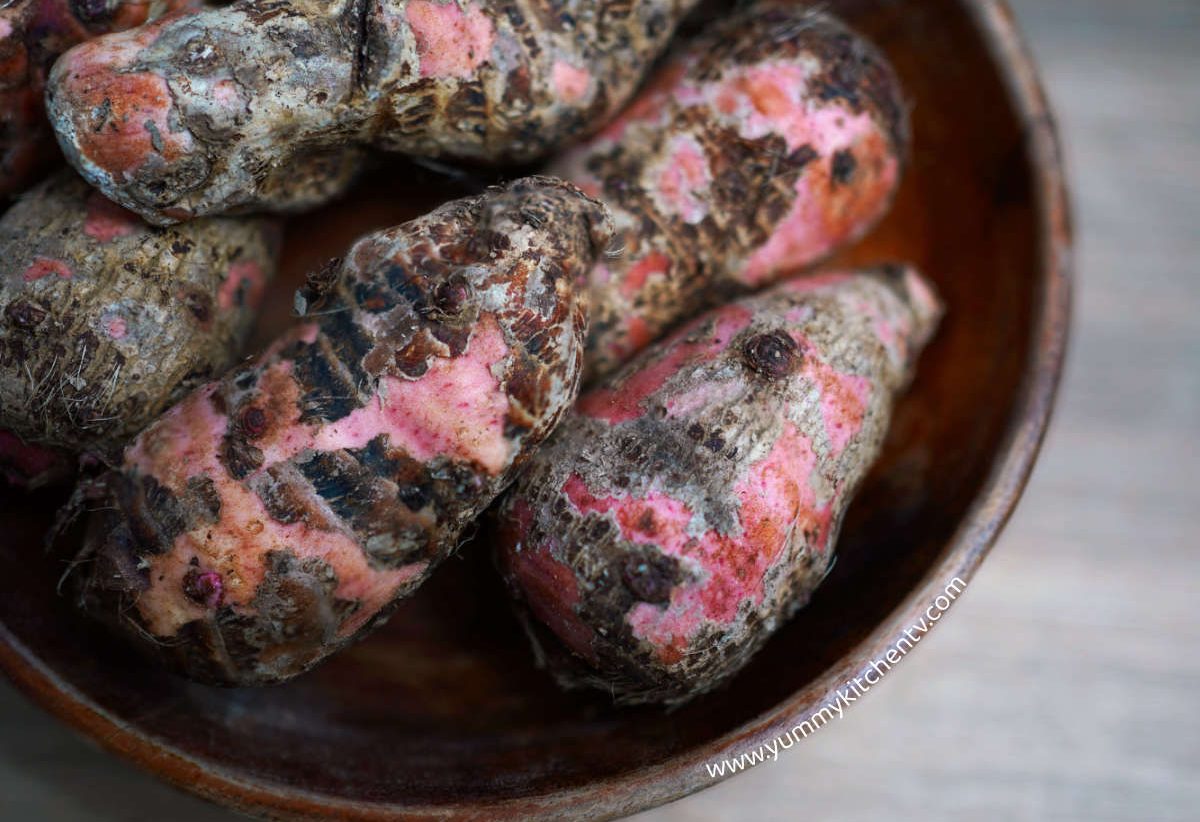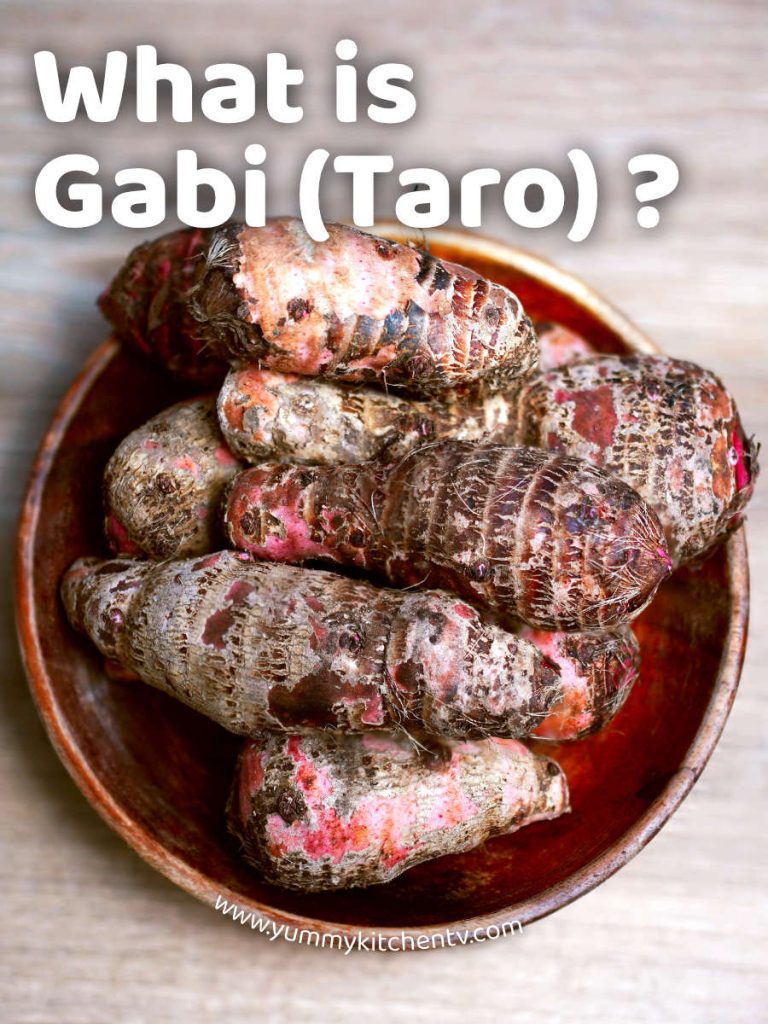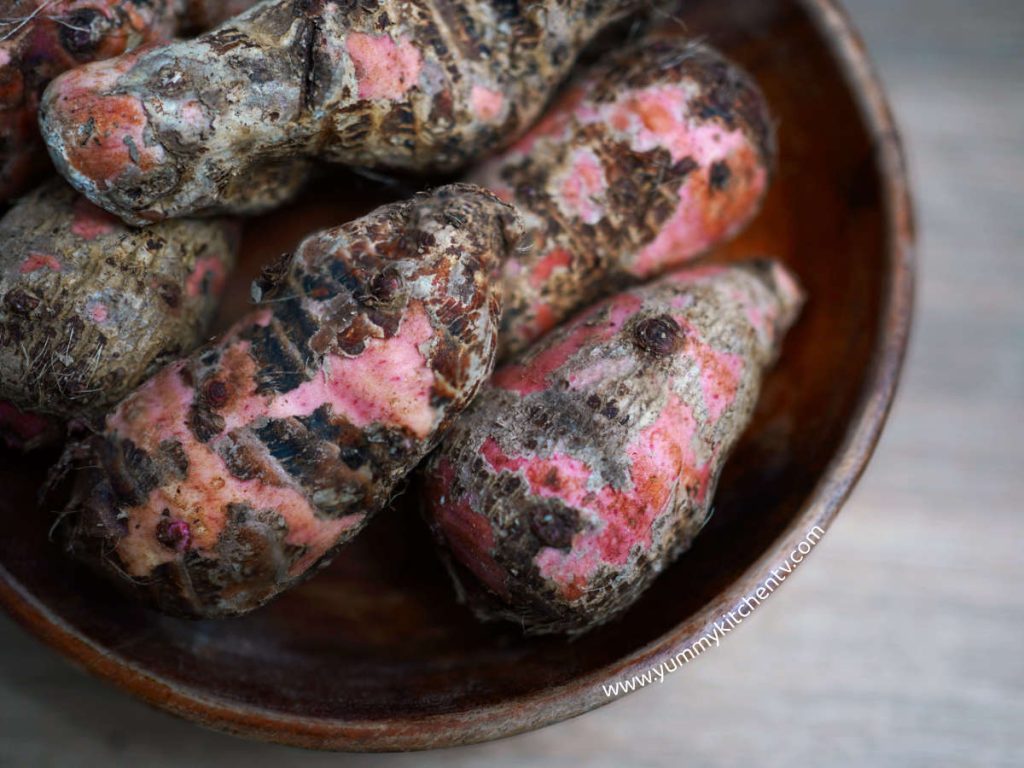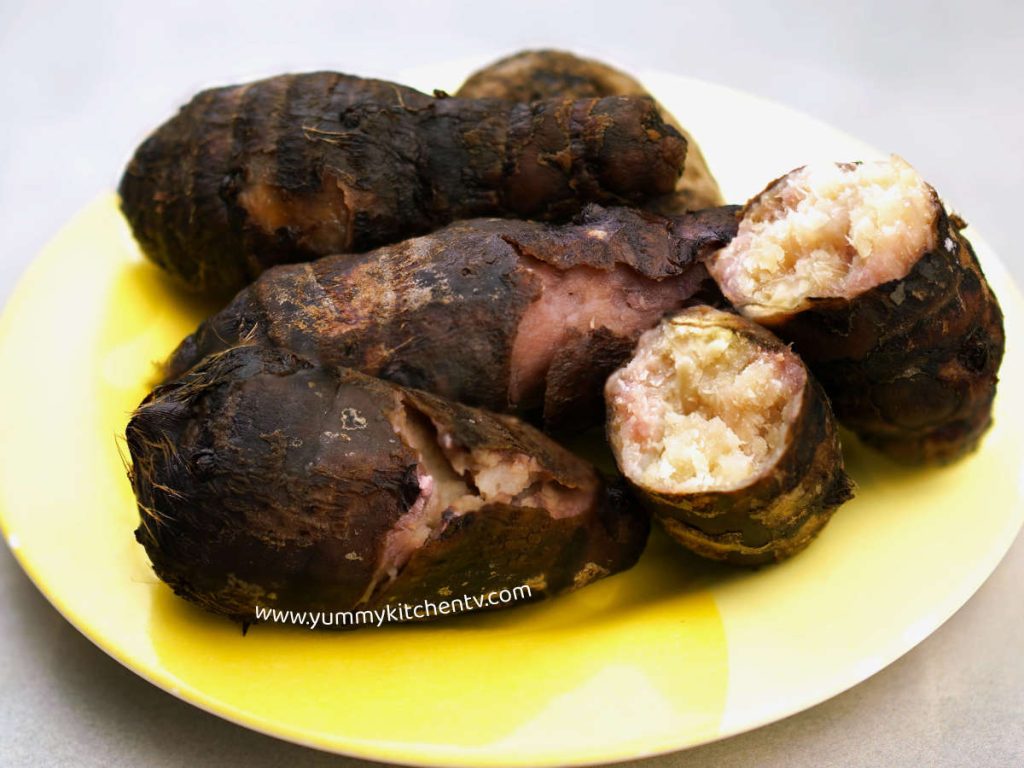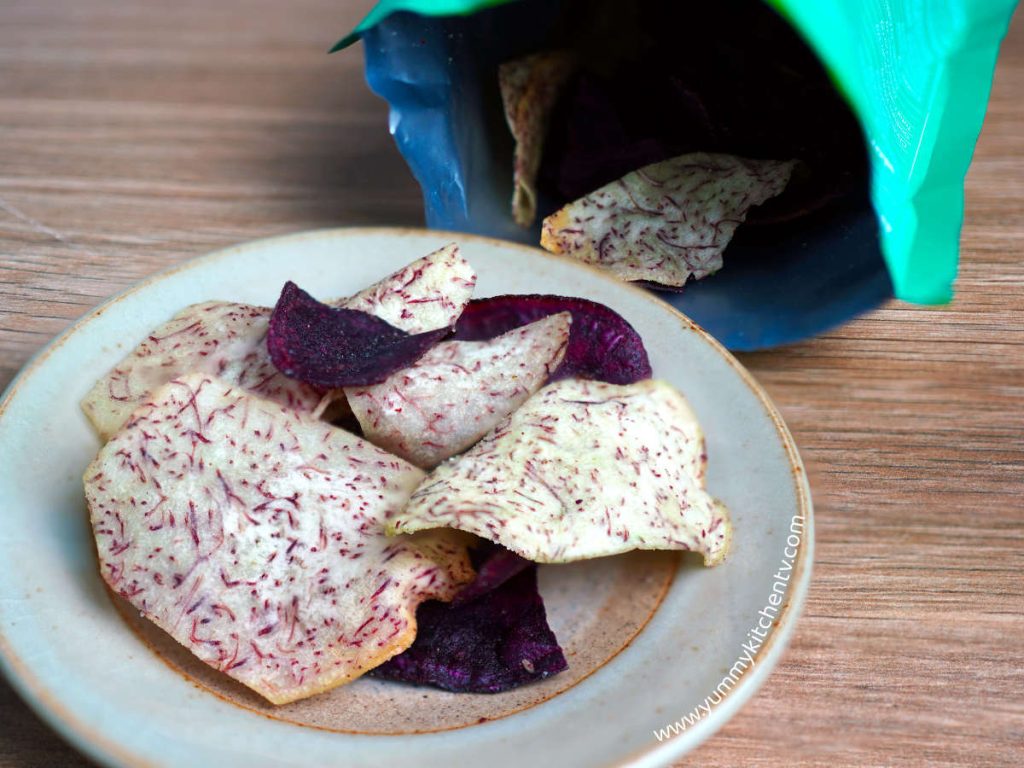Gabi (Taro) root vegetable is a edible root of a tropical herbaceous plant that is native to Southeast Asia, where it’s seen as a staple crop, these grow to around 5 feet tall, with the whole root crop, large leaves. it is popular in south east Asia, Philippines and India. It is used in some traditional dishes in the Philippines. The taro plant has a mildly sweet, nutty, with a warm vanilla undertone taste, popularly modernized and turned into a milk tea flavor and found in many cultural dishes in Asia.
A Short Introduction
The Taro vegetable, pronounced ‘taa-row’ are called “the potato of the tropics” and is seen as one of the earliest cultivated plants. The term ‘taro’ was borrowed from the Ploynesian word ‘talo’, which then got changed in time from widespread correspondence, but the crop is has many names depending on the country and region for example the Philippines calls it ‘gabi’ in Tagalog, but in other regions it’s called ‘aba’ or ‘apay’. In Hindi it’s ‘arbī’, Chinese ‘yù’ or ‘yùtou’, ‘saonjo’ in Madagascar, and ‘dasheen’ in Trinidad.
It is not a substitute for potatoes, however it’s actually healthier than the potato with all the healthy starch and nutrients lacking from the former. Almost all the parts of the taro plant is edible, from the roots to the downward pointing heart-shaped leaves once cooked. Though they are considered poisonous if eaten raw.
Found in most Asian and Latin American markets or at the Asian section of international stores. It has a mild sweet nutty taste that is a healthier alternative to other root crops like potatoes. Use the whole plant, the taro root and taro leaves, cook the these similarly to how you would a potato, from being a steamed, fried, baked into breads, fillings, and other pastries, add the vegetable with the leaves into savory dishes like stews, soups, stir-fry, or roasted with meat based dishes, you can even turn them into sweet drinks, or to taro ice cream.
Gabi (Taro) root vegetable Benefits
A root crop that was first cultivated around Asia, and is now enjoyed all over the world. The Taro root isn’t just favored for its unique earthy sweet flavor, but for how much it benefits the body. With just one of these, you’ll have a boost of a number of helpful nutrients like:
- These are rich in fiber and potassium, needed for gut health. The fiber from this root crop promotes good bacteria, keeping the intestines strong, healthy, and prevent damage to the colon.
- Help control blood sugar, even as a starchy vegetable, it has carbohydrates beneficial to blood sugar management. These help slow down absorption and digestion of carbs, preventing blood sugar spikes.
- The starch or rather ‘resistant starch’ and fiber from taro can help minimize the risk of heart diseases and lower cholesterol.
- Because it lowers cholesterol levels, it can help maintain and lose weight. Intake of fiber rich foods also keeps the stomach feeling fuller for longer.
- One serving or around one cup of taro provides you the daily recommended intake of manganese. Contributing to bone health, metabolism, and keeps the blood from clotting.
- While there are a multitude of energy bar options found in the market. You can be sure that the taro is just as energy boosting, maybe even better. A filling crop eaten by athletes or those who workout before hitting the gym.
The Gabi, an indigenous crop from the Philippines
The Gabi (Taro) root vegetable, is a root crop that has captured a wide variety of audiences. From being a cultural food added into traditional recipes, to diets like the gluten free, vegan, vegetarian, and even those who aren’t following the diet culture and just want to enjoy interestingly delicious ingredients. Here are just examples of taro food dishes, ingrained and modernized to Filipino tastes:
- Pork Sinigang with Gabi, the national stew. A savory and sour healthy sinigang soup dish made with pork, veggies and gabi. Giving a subtle sweet but earthy warm taste. The gabi is great at absorbing the soup base as well making it even more impactful once you take a bite.
- Laing na Gabi, a vegetable based dish originating from the Bicol region. This dish uses the taro leaves instead or regular leafy vegetables, simmered in coconut milk, spices, with some pork for added flavor, and sili for that slight kick.
- Vegetarian Ginataang Gabi, a sweet and spicy dish made by simmering the root crop in coconut milk, bagoong and other seasonings.
- Gabi is used as a meat replacement; for meatballs, in curries and stir fry.
- Turned into a favorite sweet drink, taro drinks includes milk tea aka; taro bubble tea, or taro boba or tapioca pearls. Make an intriguing appealing iced pastel purple sweet drink with a subtle earthy vanilla taste, decorated with tapioca balls.
- You can also find them sold as taro chips, with or without flavorings like honey coated, garlic, sour cream, wasabi, and many more now breaking into the marketplace.
The taro vegetable, stewed, boiled, baked, fried, stir-fried with sauce, made into cakes, mixed into savory meals or deliciously unique desserts, or taro drinks. Can be found everywhere with the rise of many diets, people who want to live a healthier lifestyle looking for alternatives. You’ll be sure to find a recipe that enhances the flavor of the taro vegetable to enjoy!

